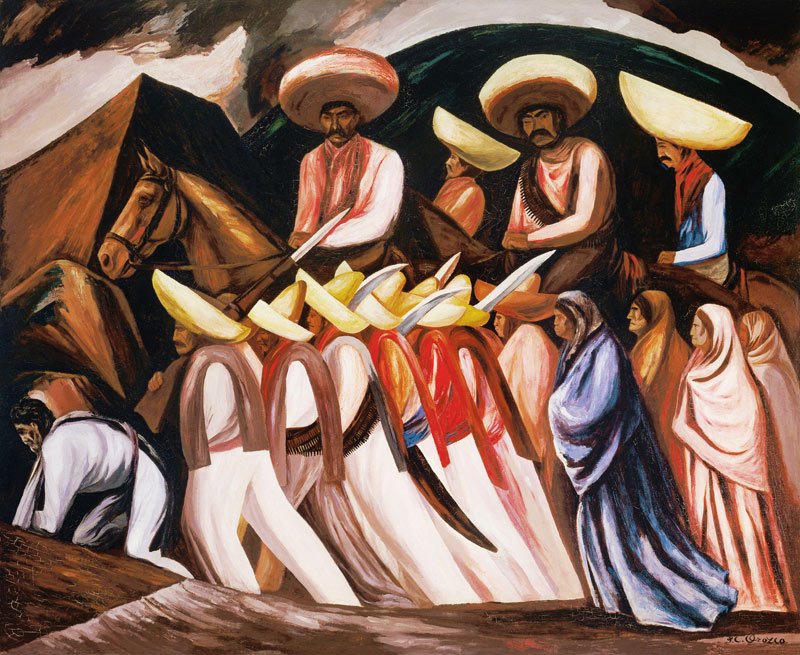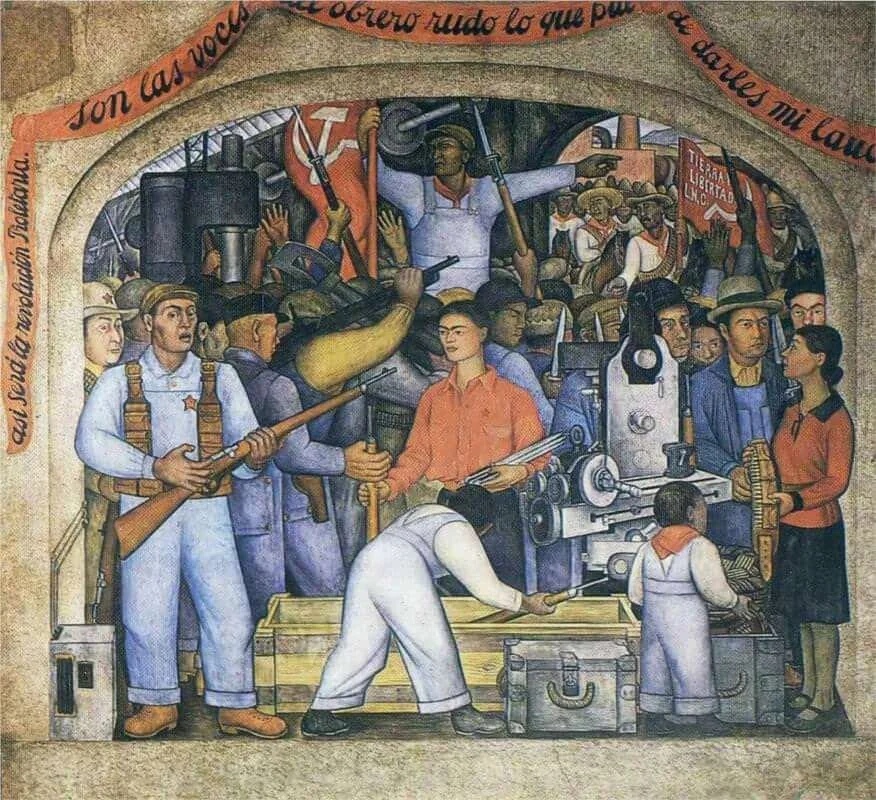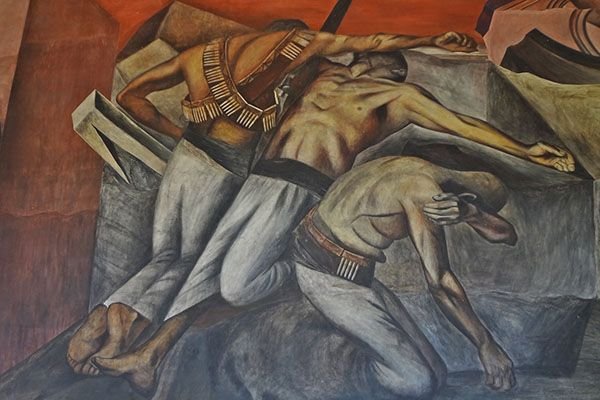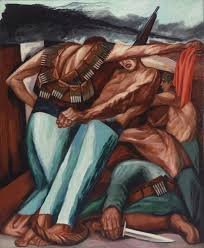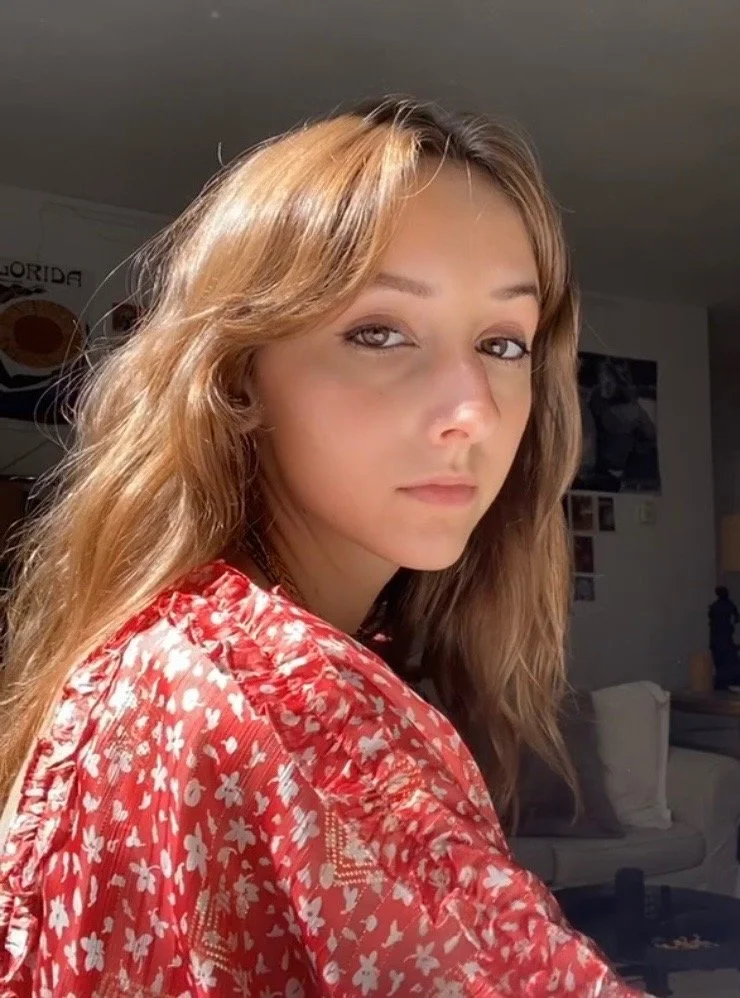Wini Cummings
Orozco and His Representative Revolution
José Clemente Orozco, Zapatistas, 1931, Oil on Canvas José Clemente Orozco (Nov. 23, 1883 - Sep. 7, 1949) was one of the “Big Three” muralists of the Mexican Revolution, alongside artists Diego Rivera (Dec. 8, 1883 - Nov. 24, 1957) and David Alfaro Siqueiros (Dec. 29, 1896 - Jan. 6, 1974). While each of these artists depicted realities of the Revolution, Orozco’s work exhibited the more accurate civilian view of the atrocities and horrors that came with the fighting. His bold use of color, subject, and expression is what truly catapults Orozco’s work into the intense scenes that they are. His work became the perfect epitome of the Mexican Revolution, and its lasting impact on civilian life.
Diego Rivera, The Arsenal, 1928, Oil Diego Rivera depicted the Mexican Revolution in an almost idealistic fashion. His work showed a more unified understanding of it, in which all people were thriving off of the result of the war. He typically portrayed a less heightened awareness of the brutality and suffering caused by the war, utilizing soft color palettes and neutral or pleased expressions on subjects.
Siqueiros, like Rivera, depicted the war as being somehow less bloody than it actually was. These two artists were in complete support of the Revolution at any cost, and their work often showed this through a certain lack of movement or emotion. Siqueiros’ work, as shown here, often excludes any portrayal of real violence and instead depicts the unity in it.
David Alfaro Siqueiros, Detail from From Porfirianism to the Revolution, 1964, Oil José Clemente Orozco, The Trench, 1926, Painting Orozco, on the other hand, understood the efforts of the Revolution but felt that the death and destruction was not necessarily the answer to government issues. His work often portrayed a darker and more muted palette that felt more realistic in depicting the darkness of what was going on. His bodies were often strewn and broken, which was a more real approach to the situation in comparison to Rivera and Siqueiros who chose instead to exhibit strong and bloodless figures.
José Clemente Orozco, Barricade, 1931, Oil on canvas Barricade is another small study for The Trench, and in this painting, one can see actual expressions on faces, as well as broken bodies and weapons of destruction.Orozco himself was actually present during the early days of the Revolution, unlike Rivera and Siqueiros who were away. He saw all of the horrors of the war, and condemned and despised the ways in which war ravaged innocent people, even if in the name of improving the future. Orozco’s work became a representation of the ordinary people of the Revolution in a profound and deeply moving way.
Wini Cummings
(she/her)
Art History ‘24
Wini is a fourth-year Art History major at Tyler. She is glad she finally found her niche and an incredible community during her time at Tyler, after having first dabbled in history, philosophy, and even economics. Outside of her studies, she enjoys collecting thrifted trinkets, destination-less walking around the city, and limited edition ice cream flavors.


